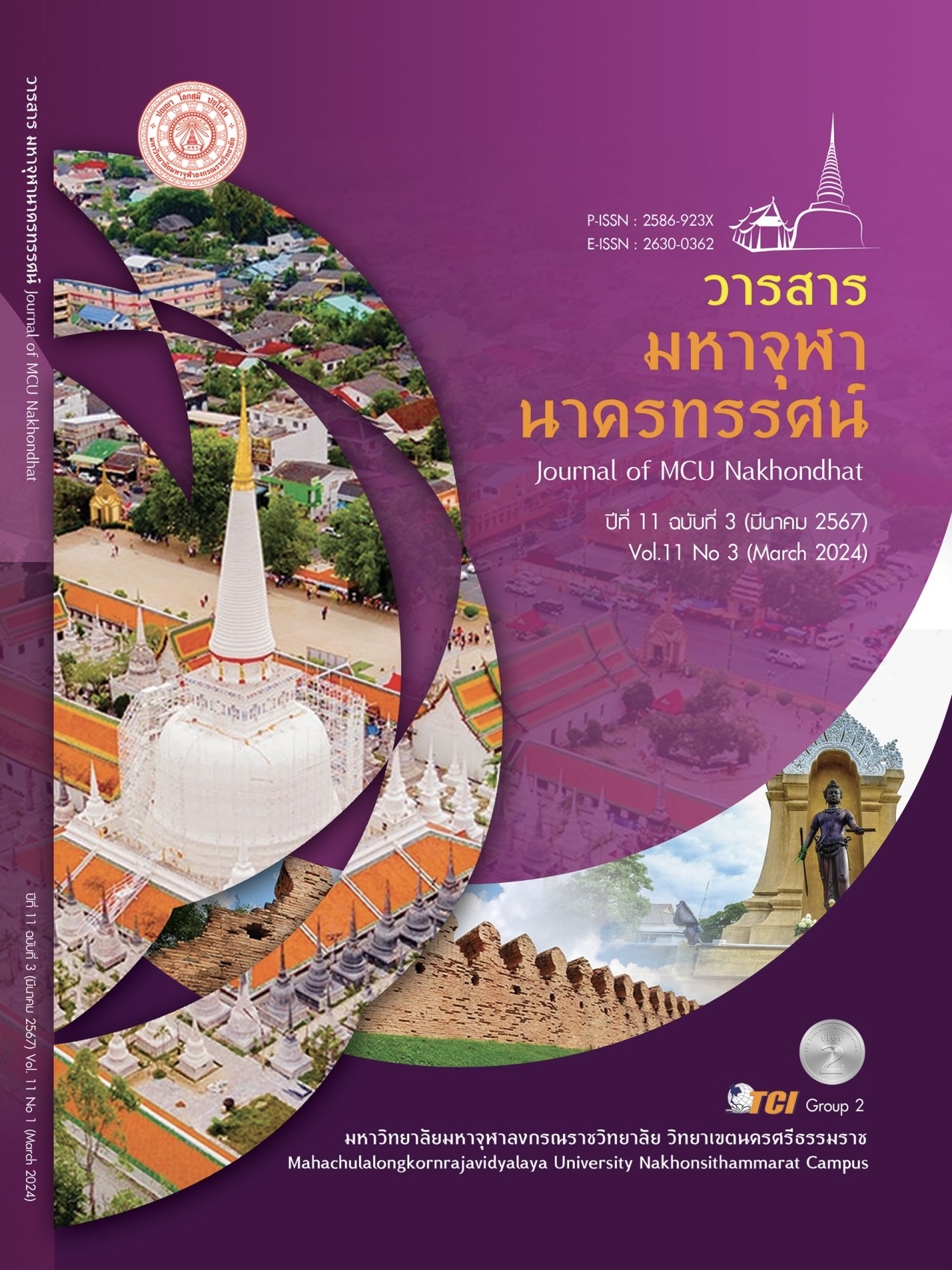A STORYTELLING OF ENVIRONMENTAL BRAND OF RUBBER KILLER BRAND
Main Article Content
Abstract
This research, aimed at analyzing the environmental brand identity of Rubber Killer products and studying brand storytelling methods for environmental sustainability, is a qualitative study. Content analysis was conducted using documentary research materials, including interviews, public relations materials, and social media platforms such as Facebook, Instagram, the Official Website, and YouTube. Additionally, data were collected through participatory observation at the store premises, in the role of customers. In the year 2023, the study findings revealed that: The brand identity of Rubber Killer products, with names reflecting the primary materials used in environmentally friendly product manufacturing, emphasizes environmental vision and mission. Slogans and symbols are aligned with the personalities of the brand founders, thus supporting the study's findings. Brand storytelling for environmental sustainability of Rubber Killer employs methods that narrate the brand's story through the founders' personalities and ideas, emphasizing environmental concerns using recyclable materials and attention to various production details and material quality. The founders' personalities are consistent with the brand identity and storytelling methods, projecting onto Rubber Killer as an environmentally conscious brand. Therefore, Rubber Killer is committed to being a brand that prioritizes environmental concerns, develops high-quality products with clear identities in all aspects, and supports sustainable environmental conservation in the future.
Article Details

This work is licensed under a Creative Commons Attribution-NonCommercial-NoDerivatives 4.0 International License.
References
ณัฐดนัย สาทสนิท. (2565). การตลาดแบบเล่าเรื่อง การรับรู้คุณค่าตราสินค้าและการตัดสินใจซื้อสินค้าธุรกิจเพื่อสังคมกรณีศึกษาตราสินค้าดอยคำ. ใน วิทยานิพนธ์บริหารธุรกิจมหาบัณฑิต สาขาวิชาการตลาด. มหาวิทยาลัยศรีนครินทรวิโรฒ.
ดารินทร์ คำพันธ์ และสุจิตรา เปลี่ยนรุ่ง. (2565). การสื่อสารเอกลักษณ์ตราสินค้าสินค้ากระเป๋าโอทอปของกลุ่มผู้ผลิตและผู้ประกอบการ. วารสารมนุษยศาสตร์และสังคมศาสตร์ มหาวิทยาลัยราชภัฏบ้านสมเด็จเจ้าพระยา, 16(1), 44-68.
นวณัท พุ่มพฤกษ์. (2559). การศึกษาเอกลักษณ์ตราสินค้าตราสินค้า (Brand identity) และภาพลักษณ์ตราสินค้า (Brand image) ของแบรนด์เสื้อผ้าแฟชั่น. ใน สารนิพนธ์การจัดการมหาบัณฑิต สาขาการจัดการ. มหาวิทยาลัยมหิดล.
ปุณชญา ใจภักดี. (2560). การสื่อสารตราสินค้า ความใส่ใจต่อสิ่งแวดล้อมและพฤติกรรมผู้บริโภคต่อตราสินค้าเพื่อสิ่งแวดล้อมของเจเนอเรชั่นวาย. ใน วิทยานิพนธ์นิเทศศาสตรมหาบัณฑิต สาขานิเทศศาสตร์. จุฬาลงกรณ์มหาวิทยาลัย.
พิทักษ์ ชูมงคล. (2559). การบริโภคเชิงสัญญะกับการสื่อสารเอกลักษณ์ตราสินค้าในอินสตาแกรม. วารสารนิเทศศาสตร์, 34(1), 75-86.
ภานนท์ คุ้มสุภา และมาโนช ชุ่มเมืองปัก. (2564). กลวิธีการสื่อสารของกิจการเพื่อสังคมกาแฟอาข่า อ่ามา กับการขับเคลื่อนธุรกิจและการพัฒนาคุณภาพชีวิตเกษตรกรชาวอาข่า. วารสารสหวิทยาการสังคมศาสตร์และการสื่อสาร, 4(1), 1-15.
ลักษมี พันธุ์ธนโสภณ. (2555). กลยุทธ์การตลาดสีเขียว: แนวคิดใหม่ใส่ใจสิ่งแวดล้อม. วารสารมหาลัยคริสเตียน, 18(3), 323-334.
สเริงรงค์ วงศ์วรรค์. (16 มกราคม 2567). เหตุผลที่เลือกวัสดุเป็นยางในรถ เพราะความน่าสนใจของยาง คือ ความคงทน และ Texture ของยางแต่ละเส้นไม่เหมือนกัน. (พรรณปพร สุขบาง, ผู้สัมภาษณ์)


